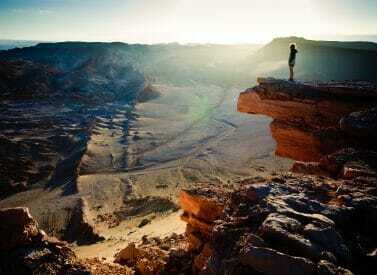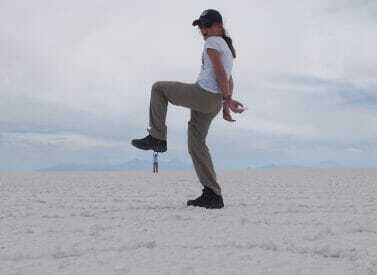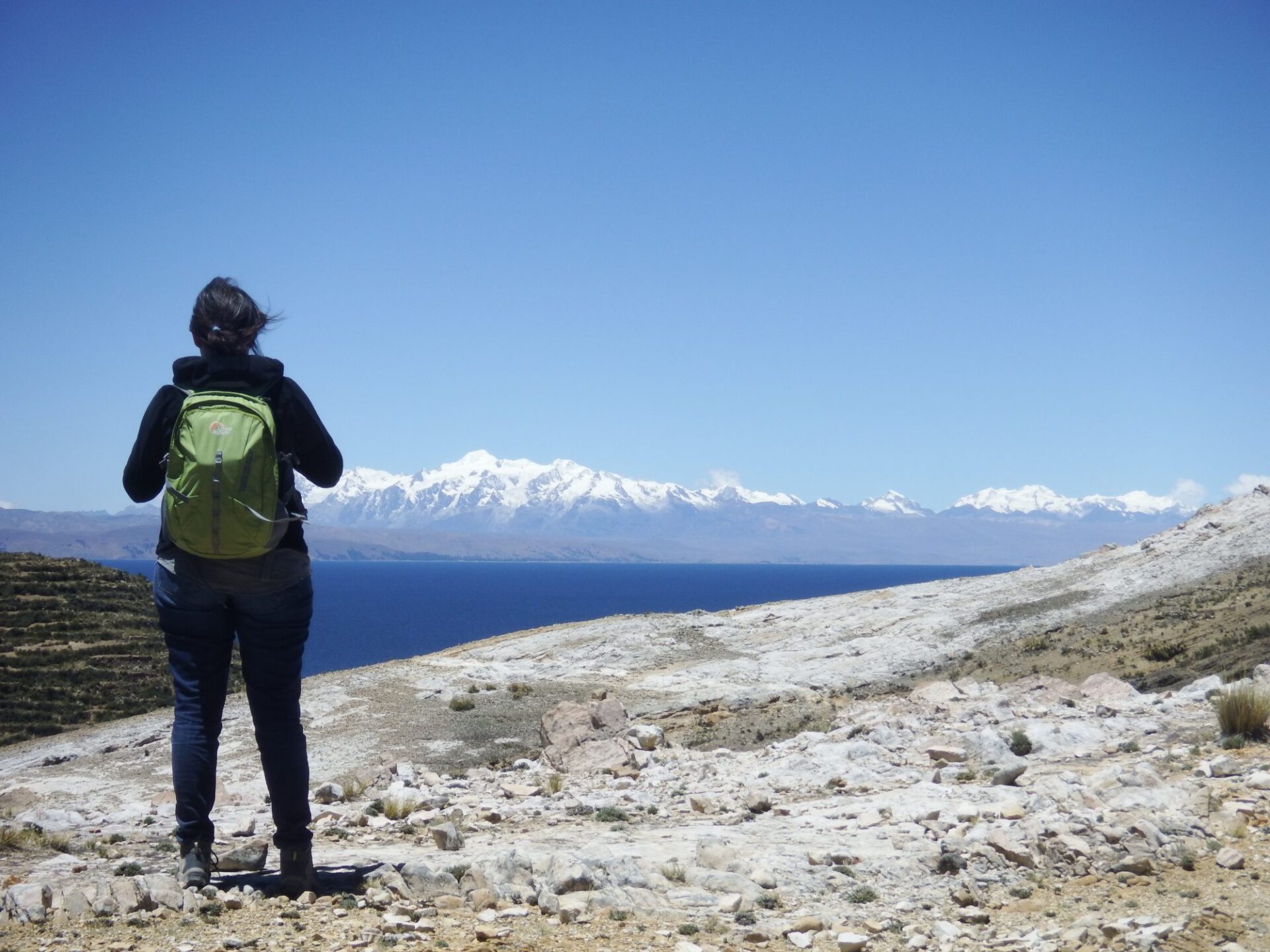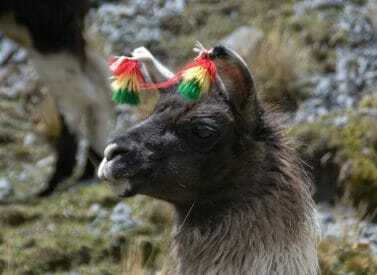
Bolivia Uyuni Salt Flats 4WD Tour
Tour the Uyuni Salt flats in 4WD with English-speaking guides staying in salt hotels.
Uyuni is a stunning wilderness area – called Salar de Uyuni in Bolivia – and our four wheel drive jeep tour showcases the highlights.
We pass by beautiful volcanoes, coloured lakes and dramatic deserts, and visit the Stone Tree, Dali’s desert and more. Read all about the attractions in and around Uyuni and the Bolivia Salt Flats.
Amazingly, wildlife survives in this harsh but beautiful environment, with flamingos, llamas and viscachas living here.
More on Uyuni Salt Flats 4WD tour
The trip here starts and finishes in Uyuni, but we can arrange for the tour to start and/or finish in Chile’s San Pedro de Atacama if that suits you better.
Starting in Uyuni, we head out into the vast southern desert and enjoy the starkly beautiful landscapes of this dramatic desert wilderness.
The network of salt hotels we use are newly built, of a high standard (3/4 star) and in keeping with the local environment.
The hotels were built in partnership with four local communities, each actively involved in their construction and running, and benefit directly from the income.
Trip Highlights
Print Share Download as PDF-
Outstanding scenery as you cross the Salar de Uyuni vast salt flats on this 4WD tour.
-
Visit the salt mounds, and see the process for the mining of salt.
-
Enjoy the vast southern Bolivian desert landscapes and Daliesque weathered rock shapes.
-
Search for Bolivian desert wildlife, such as viscachas and flamingos.
-
At night marvel at the star-filled clear desert sky.
-
Experience the local traditional culture and see how people survive in this remote, harsh environment.
I had a fantastic time in the Salar.
The place is extraordinary and beyond anything I imagine even from the photos I saw before getting there.
F. Maxwell, Uyuni tour
Full Itinerary
Day 1: Uyuni to salt factory, Incahuasi Island, Pucara Chillima, Tahua village, Tahua Salt Hotel (L,D)
We will pick you up at your hotel at 10.00.
Today we have an unforgettable journey through 12,000 km² of fantastic landscapes of salt.
Prepare your camera! The dazzling white mantle of the Uyuni Salt Flat resembles an immense ice-field.
In the winter (dry season, from May to October), when the surface hardens, geometrical formations start appearing formed by salt particles conglomerating into polygons.
In summer (rainy season, November to February), the saline desert transforms into a gigantic mirror that melts into the purest sky in America.
We drive onto the salt flat at the village of Colchani, centre of the salt factories. We visit one of these and learn about the families that are dependent on salt mining for their livelihoods.
We then visit the part of the salt plains where mounds of salt are collected, and from here we will head towards Incahuasi Island. You can set off to climb to the summit where you get a fabulous view, 360 degrees.
We have a box lunch on the island and then head toward the dominant and magic Volcano Thunupa whose slopes house the Chantani Museum. The museum is home to ceramics and silent mummies. We drive some way up the volcano and visit the Coquesa Mummies museum.
We will spend the night in the Tayka Salt Hotel*.
*Please note, on Wednesday departures we will stay at Hotel Luna Salada.
Day 2: Ojo de Perdiz, lagoons and coloured deserts, Hotel Takya of the Desert (B,L,D)
We leave the salt flat and head to Charagua, a pretty place of corals and goat farmers.
It may take us one hour, via a bumpy road, to arrive at the Burnt Town of San Pedro de Quemes, where we will leave the car to go and wander through its small streets and view the buildings which have inspired the hotel Tayka of Stone.
We take lunch in the Hotel of Stone. There is an optional Shepherding of Llamas trip, spending an hour or so helping a shepherd or shepherdess with the llamas, a vital part of life in the Salar.
In the afternoon we drive towards the lagoons – Cañapa, Hedionda, Chiarkota, Honda and Ramaditas, replete with flamingoes happy to be photographed!
Other birds, such as Andean gulls and ducks, accompany the flamingoes in these lagoons, which are flanked by snow-capped volcanoes.
Next we enter the deserts of sand. These fantastic deserts are owners of the whole palette of terracottas. Red, oranges, ochers, coffees and beige – every bend in the road there are more colours, fighting for your attention.
In front of the most impressive of these palettes of colours is the Hotel Tayka of the Desert, with private bathrooms, hot water and environmental heating waiting for us.
Day 3: Ojo de Perdiz, Green and Red Lagoons and return to Uyuni or on to San Pedro de Atacama, tour ends (B,L)
An early start today at 05.30, towards the Eduardo Avaroa and Flora and Andean Fauna Reserve and then the famous Stone Tree – perfect for a picture.
Next we travel to the Red Lagoon to observe the great population of flamingoes, then we’ll see the Morning Sun Geysers to catch them at their most active moment. This will be the highest point on our route, we will be at nearly 5,000m/16,404ft.
Here, noisy fumaroles and splooshing mud puddles make the earth seem to boil in reddish, grizzly, scarlet mud.
The desert and salt flat of Chalviri is another superb scene. It combines the dazzling white, the ochres of the desert, the blue of the water, and, in one of its corners, we can to take a dip in the hot springs of Polques.
Today is a day full of highlights, as next in line is Ladies of the Desert, a master piece created by the the wind and the Andean peaks around, with crazily shaped rocks in fantastic colours, all moulded by the winds.
Nearby is the Green Lagoon, at the foot of Volcano Licancabur, another pearl of the reserve.
From the Green Lagoon we return to the Red Lagoon, have lunch, and then watch as the shifting sun helps to change its colour from a woody red to a blood red colour.
We return via Villa Mar to Uyuni, and the tour with a drop off at the bus station.
(We can arrange drop-offs at San Pedra de Atacama, too – extra cost).
Overnight tourist bus departure at 20.00 and arrives at La Paz at approx. 07.00.
Prices From $905 / £736 per person
What's Included?
All meals except first breakfast and last dinner, 4wd vehicle, English speaking driver/ guide, accommodation in 3 star community run hotels full board & ensuite bathrooms
What's Not Included?
Flights, tips, personal items, drinks at hotels, Uyuni hotels, transport to Uyuni, Llama shepherding USD 17pp, entry fees USD 45pp (can be included)
Accommodation
Community owned and run hotels.
The hotels we use are built of local materials, salt or stone, and are designed to be as ecologial as possible in this fragile environment. All rooms have a private bathroom with solar hot water and heating.
This is one of the poorest parts of Bolivia where there is a problem of depopulation as local Aymara communities really struggle to survive. The hotels are on land rented from the communities and will be passed entirely into community hands in 15 years.
It is possible to offer this trip with more basic, simple guesthouse accommodation at a lower cost. The rooms will be more basic but will count with an ensuite or private bathroom and heating. Hot water may not work 24 hours a day. Please ask for more details.
Tour Staff
You will be accompanied by an English speaking driver guide.
There is also the option to reduce the cost by travelling with a Spanish speaking driver only. They will give brief explanations in Spanish at each site, but are not a qualified guides and may only have a word or two of English.
Meals
Vegetarians and many other dietary requirements are catered for without problems. Please let us know in advance of any requirements you have.
Meals are provided at hotels – breakfasts usually involve hot drinks, coffee, juice, toast, eggs and fruits. Lunch will either be sandwiches and snacks (if on the road) or a soup with a main meal of rice/pasta.
Dinner usually consists of a soup to start and then a main of rice, pasta, mashed potato etc. Note that Uyuni remains a very remote area and sometimes choice is limited.
Each hotel has a restaurant offering buffet style meals with as much local produce as possible.
Activity Level
This trip is open to people with a penchant for exploring, with a positive attitude and outlook.
The days are not strenuous, in walking terms, but we are out and about seeing things on a daily basis. Dust can be a problem and quite extremes of temperature, warm in the day and cold at night the moment the sun goes down.
You don’t need a specific fitness level as such, but to be adaptable, enjoy being outdoors and viewing sites etc.
We recommend several days at altitude before setting off, to help acclimatise to the high altitude.
Practical Information
An introduction to Bolivia
Land-locked Bolivia is a country of dramatic landscapes and fascinating native cultures and traditions.
The Altiplano or “High Plain”, averaging 3,800m, is its most populous region. The vast, luminous plateau is flanked to east and west by parallel Andean ranges.
La Paz, the world’s highest capital, lies in a deep canyon at the edge of the Altiplano, and at the foot of Illimani (6,400m). It is a striking city for its dramatic setting and its strong Indian character.
Lake Titicaca is the world’s highest navigable lake. It was sacred to the Incas; according to legend, their founding emperor-gods rose from these waters to give birth to their empire. Just south of the lake stands the sacred pre-Inca site of Tiahuanaco.
Geography of Bolivia
On the south-western Altiplano are the Uyuni Salt Flats, the largest in the world. Here, the shimmering white salt pan and deep blue sky combine to create a truly magical spectacle.
The stunning Cordillera Real is a mountain range dominated by huge snow peaks, including Illimani and Illampu (6,380m). The Real divides the northern Altiplano from the tropical forests to the east. The Cordillera Real’s eastern slopes are characterized by the deep, sub-tropical Yungas gorges.
Further south, the tropical Chapare is the agricultural heart of Bolivia. East of this band of high forests and plantations lies Bolivia’s Oriente, a vast swathe of Amazonian jungle and savanna accounting for 2/3 of the country and featuring some of the last untouched wilderness on earth.
In the north-eastern Department of Beni, some 50% of the country’s mammals and birds reside. Below, and in no special order, we outline some of the top places to go and things to do.
Weather in Bolivia
Bolivia lies within the tropics, between latitudes 10º and 22º south. The climate, as varied as its geography, is affected by latitude and, especially, by altitude.
The best time to travel is the winter (dry season) between May and Oct when, typically, weather systems over the Andes are stable, and overall you can expect bright sunny days and cold clear nights. Most of the rain falls from Dec to March. Climate can be divided into these distinct zones:
The Andes and the Altiplano
There is relatively little precipitation on the Altiplano, especially in the dry season – most rainfall is from Dec to March. However, there is periodical, localised rain on high peaks and valleys all year round.
The further south and west you go on the Altiplano, the drier are the conditions; around Uyuni, semi-arid conditions prevail. The Andean sun’s rays are very strong.
Temperature-wise, the Andes and Altiplano experience significant fluctuations over a single day. At 4,000m, the pre-dawn temperature can drop to -15ºC, while noon temperatures at the same location can reach 20ºC.
Southerly cold winds mean the southern Altiplano is not only drier, but also noticeably colder and windier than the north (pre-dawn temperatures at Uyuni in July regularly drop to -20ºC).
On treks in the Cordillera Real in the dry season, expect a range of conditions within a single day: cold/freezing nights at camps above 4,000m (where pre-dawn temperatures sometimes reach -15ºC); warm, spring-like mornings and afternoons; and cold evenings. Conditions are generally dry, but note that mountain weather is fickle and localised, and precipitation is not unusual in the dry season.
Expect temperatures to swing between sun and shade, sheltered and exposed ground and with altitude gain and loss. A quick-setting sun means temperatures drop fast.
The city of La Paz (3,630m) is relatively sheltered. Average high/low temperatures range from 1-17ºC in June and July (coldest months) to 6-19ºC in Nov and Dec (warmest months). In June and July, it rarely rains more than 1 or 2 days per month, while in January there are on average 15 wet days.
The tropical lowlands & yunga (Amazon)
Year-round, weather conditions in the Amazon basin are hot and humid and always with the chance of rain.
There is a ‘cooler’, drier winter season between May and October. During this ‘dry season’, the average daytime high temperature is between 25-31°C and the average nighttime low is between 16-22°C.
In the dry season, heavy downpours typically occur every few days.
Note that around 80% of annual average rainfall – approx 2,000 mm in Bolivia’s northern lowlands – occurs in the wet season, Nov-April.
On rare occasions, between May and September, cold fronts from Argentina – surazos – can sweep into southwest Amazonia and push temperatures down to 9°C. (Surazos usually last between 1 and 3 days).
The Yungas shares the same dry/wet months but varies from quite wet to very wet depending on whether it is the ‘dry’ or rainy season. Average temperature is 24°C.
Kit list
Good kit is vital for every trip.
Book with Andean Trails and get 15% off Páramo’s fantastic ethical and high performance outdoor gear.
Overview
Bolivia has an incredibly local and varied set of weather systems, which means you need to be prepared for almost every eventuality.
When planning for these changeable climatic conditions you will encounter across Bolivia, layering is the most practical and versatile clothing system.
The sun is very strong throughout the country, so good sun cream, a hat and sunglasses are vital.
It can also get very cold at night time especially in the mountains and in cities like La Paz. Jumpers, fleeces and warms hats – which you can buy there – are also essential.
It can rain at any time, so always have a poncho/waterproof jacket handy.
Give plenty of thought to kit selection, and try to keep weight down.
Below is a more detailed guide.
Detailed kit list
- Medium weight parka or a down jacket.
- Waterproof jacket and trousers. The jacket needs to be water proof and roomy. Side-zip pants are recommended.
- 2-3 long-sleeve shirts – no cotton
- 2-3 short-sleeve T-shirts – no cotton
- 2 pair of hiking trousers- cotton or synthetic material (no jeans)
- 1 fleece or sweat trousers (for cold evenings)
- 2 pair hiking shorts
- Long thermals – synthetic or wool – light to medium weight top & bottoms.
- 2-3 mid-weight (wool or synthetic) socks.
- 2-3 liner socks if needed
- Athletic-type socks, several pairs, city use
- Hiking boots that are waterproof and well broken-in.
- Running/tennis shoes or sandals are very comfortable when you are in cities
- 1 lightweight wool sweater or windproof fleece
- 1 wool or synthetic warm hat.
- 1 light sun hat with a wide brim.
- 1 pair of medium-weight wool or synthetic gloves
- Broad-brimmed sunhat, essential.
- Sunglasses with UV filter.
- Scarf for cold.
- Bandanna – to protect neck from strong sun.
- Daypack (at least 30 litres). Comfortable and with waterproof lining or cover.
- Water bottle (2 litres approx.) & purification tablets.
- Personal first-aid kit to include: painkillers, plasters (band-aids), moleskin, anti-biotic cream, general antibiotics (ask your GP), after-bite (tiger balm), anti-diarrhoea tablets, throat lozenges, re-hydration salts & personal medication.
- Insect repellent (just in case)
- Towel & wash-kit.
- Wet Wipes/antiseptic hand-wash cream.
- Sunscreen (factor 30+) and lip salve.
- Head-lamp (plus spare bulb and batteries).
- Penknife.
- Travel alarm clock.
- Plastic bags – ‘Zip-loc’ & tough bin liners.
- Camera and film / memory cards (take at least twice the amount you think you will need!).
- Book, e-book, mp3 player/ipod or other to help pass the time.
- Binoculars.
- Spanish/English phrasebook.
- Extra snacks i.e. cereal bars or favourite chocolate bars.
Miscellaneous others
- Money belt.
- Passport.
- U.S. dollars cash, mixed-denomination notes, undamaged and unmarked.
- ATM cash/credit card.
- Any inoculation certificates.
- Personal & medical insurance certificates.
- Presents e.g. Postcards from home.
- Comfortable clothes for travel, smart clothes for night life.
ATOL holiday protection
Andean Trails has 25 years of experience of putting together the best South America holidays.
We pay a fee to the CAA for every licensable passenger we book since we hold an Air Travel Organiser’s Licence granted by the Civil Aviation Authority. In the unlikely event of our insolvency, the CAA will ensure that you are not stranded abroad and will arrange to refund any money you have paid to us for an advance booking.
We also offer ATOL (Civil Aviation Authority) protected holidays to give our customers peace of mind when booking and travelling.
When you buy an ATOL protected air holiday package from Andean Trails Ltd you will receive a Confirmation Invoice from us confirming your arrangements and your protection under our Air Travel Organiser’s Licence number 6275.
You can read more about ATOL, who is covered and what protections you have if not ATOL-covered, on our ATOL page.
What is ATOL?
The CAA’s ATOL scheme offers protection to your money and your holiday if you book with us. Not everybody is covered (see ‘Who is covered?’ for more), as you must purchase an ‘air package holiday’ with Andean Trails to be protected.
And ‘air package holiday’ is defined as including a flight and some ground services (hotel, transfer, trek etc). This is also known as an ‘ATOL-protected holiday’.
Who is covered?
To be covered by ATOL, you must book a flight and some ground services with us and be from the UK. If you are from the UK and only book ground services and no flights, you are not covered by ATOL (see below for more on how non-ATOL clients are covered).
If you are outside the UK and buy flights with us, you will be ATOL protected IF any of the flights booked with Andean Trails touches/stops in the UK at any point during your holiday package booked with us.
If you buy your flights elsewhere, please check with that agent if you are ATOL protected. Be careful with online flight purchases and make sure you know what protection you have, if any, before paying for flights.
Not all holiday or travel services offered and sold by us will be protected by the ATOL scheme. Please ask us to confirm what protection may apply to your booking.
For land only holidays not involving any air travel, in accordance with “The Package Travel, Package Holidays and Package Tours Regulations 1992”, all UK passengers booking with Andean Trails Ltd. are fully protected for the initial deposit and subsequently the balance of all money paid to us, arising from cancellation or curtailment of travel arrangements due to the insolvency of Andean Trails.
I’m not ATOL covered, what protection do I have?
If you are not ATOL covered, any payments you make to us go to a Trust account.
We can only access this money once your tour has been completed, meaning that if anything happens to Andean Trails Limited while you are on holiday, then your money is secure and you can either complete the trip or be able to make it home.
If you pay for your holiday with a credit card, some offer payment protection – please check with your cardholder.
You also should have cancellation protection written into your insurance (which we recommend you have at the time of booking) in case you need to cancel.
Bolivia’s Amazon rainforest
The gateway to the Bolivian Amazon lies at the lively town of Rurrenabaque.
Motorised canoes will take you into the rich and verdant realms of the Madidi National Park, a hub of ecotourism in the Bolivian Amazon basin.
On a network of paths and waterways you can immerse yourself in the hot and humid tropical paradise that is the rainforest.
Wildlife such as howler monkeys and pink river dolphins, as well as a colourful indigenous culture, are a magnet for those who like to experience not only the Andean climates of Bolivia but to venture further into the depths of this fascinating country.
Condoriri and the Cordillera Real, Bolivia
The Cordillera Real of Bolivia is a range of awe-inspiring snowy peaks just south of La Paz.
The towering peaks of this mountain range, dominated by Illimani (6,400m/20,997ft), Illampu (6,368m/20,892ft) and Ancohuma (6,427m/21,086ft), form a magnificent barrier which separates the Altiplano from Bolivia’s extensive rainforest.
The range is criss-crossed by ancient pilgrimage and trading routes and gives avid trekkers plenty of options to escape civilisation into the incredibly dramatic high Bolivian altitudes.
In the Condoriri Range you still won’t meet many fellow hikers but will find yourself in the company of majestic peaks, high altitude passes with stunning views, grazing herds of llamas and alpacas and soaring condors.
La Paz, Bolivia
La Paz is a capital like no other, set in high Andean climates and surrounded by the magnificent Andean Cordillera Real mountains.
Here you can sit at a cafe and watch the local ladies in their bowler hats and colourful traditional costumes. Immerse yourself in the fascinating culture of its indigenous population.
Take a cable car ride on the Teleferico to El Alto, the enormous satellite city spread across the Bolivian Altiplano high above La Paz.
Marvel at the views and its bustling streets.
Visit the craft markets, full of colourful weavings and woolly jumpers, there are souvenirs to suit every taste.
Don’t forget to explore and haggle at the intriguing Witches’ market, home to all sorts of potions.
La Paz really is full of life.
Lake Titicaca, Bolivia
Bolivia’s Lake Titicaca is home to the lively lake side town of Copacabana.
Stay for a few days to explore the lake shore and the islands. Copacabana is likely to be your entry point if coming overland from Puno in Peru and heading for La Paz.
Pass the 12 stations of the Cross as you hike up to the nearby hill for views over the lake to the Islands of the Sun and the Moon with a beautiful mountain backdrop, the high ice-covered peaks of the Cordillera Real shimmering in the distance.
Take a one day or overnight trip by boat to the islands, Isla del Sol and Isla de la Luna, where you can learn something of traditional island life as you wander along the ancient networks of paths.
Sajama, Bolivia’s highest peak
Sajama National park offers fabulous off the beaten track trekking and some easy Andean peaks amid amazing natural beauty.
A few hours from La Paz by four wheel drive brings you to Sajama National Park.
In this beautiful remote high mountain area you have the opportunity to explore a little visited part of southern Bolivia, right on the border with Chile, in the shadow of Bolivia’s highest peak – Nevado Sajama (6,542m/21,463ft).
Snow-capped volcanoes fringe the vast altiplano and lagoons lie only a walk away in the mountains.
Geysers and hot springs await and you can be sure to see a variety of typical Andean wildlife, such as llama, vicuna, alpaca, Andean flamingos and viscachas.
Torotoro National Park, Bolivia
Torotoro National Park is a jewel for those seeking to escape the crowds – offering caves, canyons and fossilised dinosaur footprints.
The stunning Torotoro National Park is still an off the beaten track destination in Bolivia and well worth a visit.
Its highlights include some of the best preserved dinosaur footprints in South America, as well as stunning geological formations from an era long gone.
There are day walks across volcanic landscapes and you’ll pass by remote Andean villages, giving an insight into true Andean culture.
Uyuni and the Salt lakes, Bolivia
The dazzling, white Salt Flats of Uyuni stretch as far as the eye can see. The salt flat is dotted with small islands where only cacti grow.
The sheer expanse of the flats (nearly 11,000 sq km) will leave your mind boggled, and that’s before you’ve even ventured further into the surrounding high desert of the Bolivian Altiplano.
It is there that you will find desert landscapes that transport you into another world.
The desert is home to beautiful lagoons of many hues, home to flocks of elegant flamingos.
In the world of little water there are hot springs to soak in, weird other worldly stone formations and spouting geysers.
All of this set against a backdrop of snow covered volcanoes and vast open skies.
Available Dates

Dates & Prices
Prices From $905 / £736 per person
2025 price, per person, shared room basis
Supplement for single travellers
Wed, Thurs, Sat small group departure
Daily private departures at extra cost
Daily departures in simple guesthouses, USD 750 per person.
Can’t find what you’re looking for? Get in Touch
+44 (0)131 378 5593
+44 (0)131 554 6025



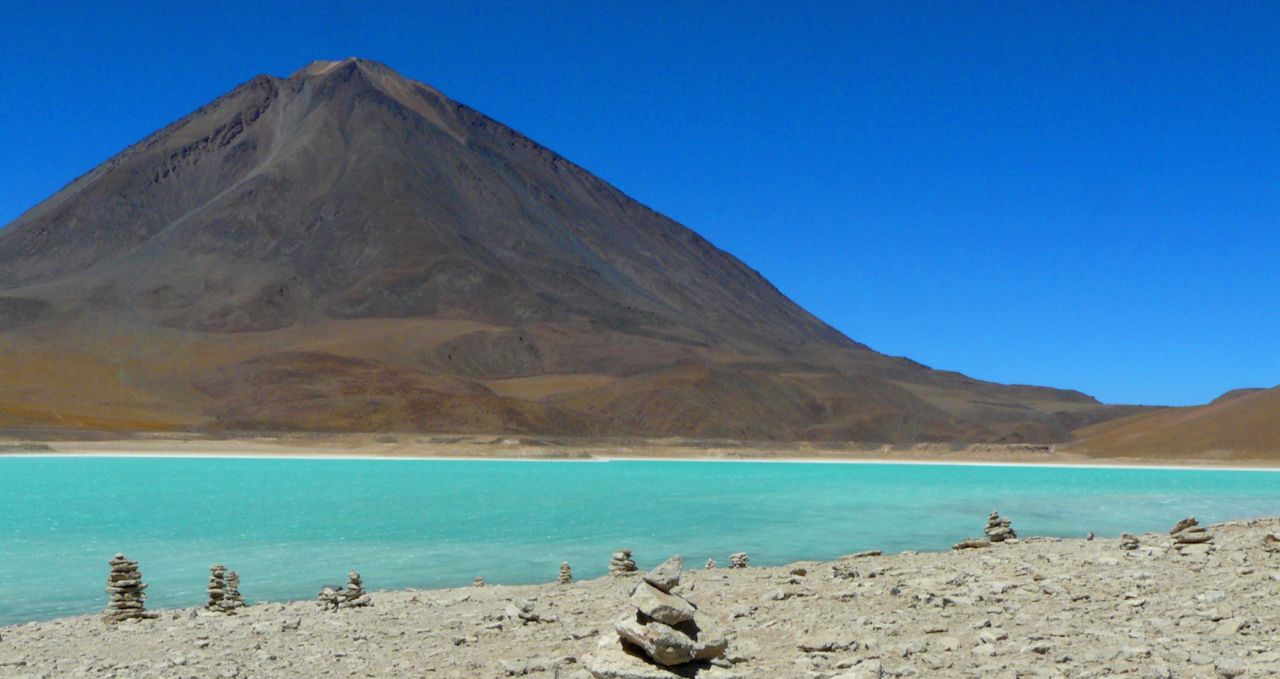
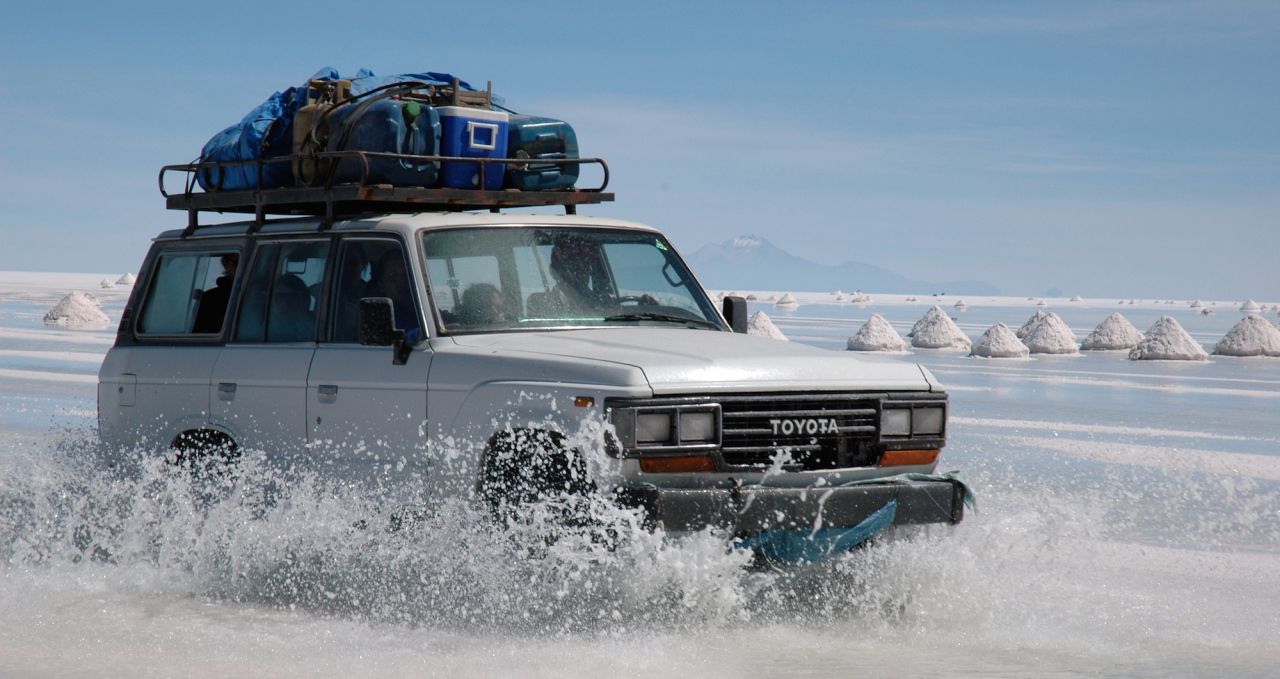
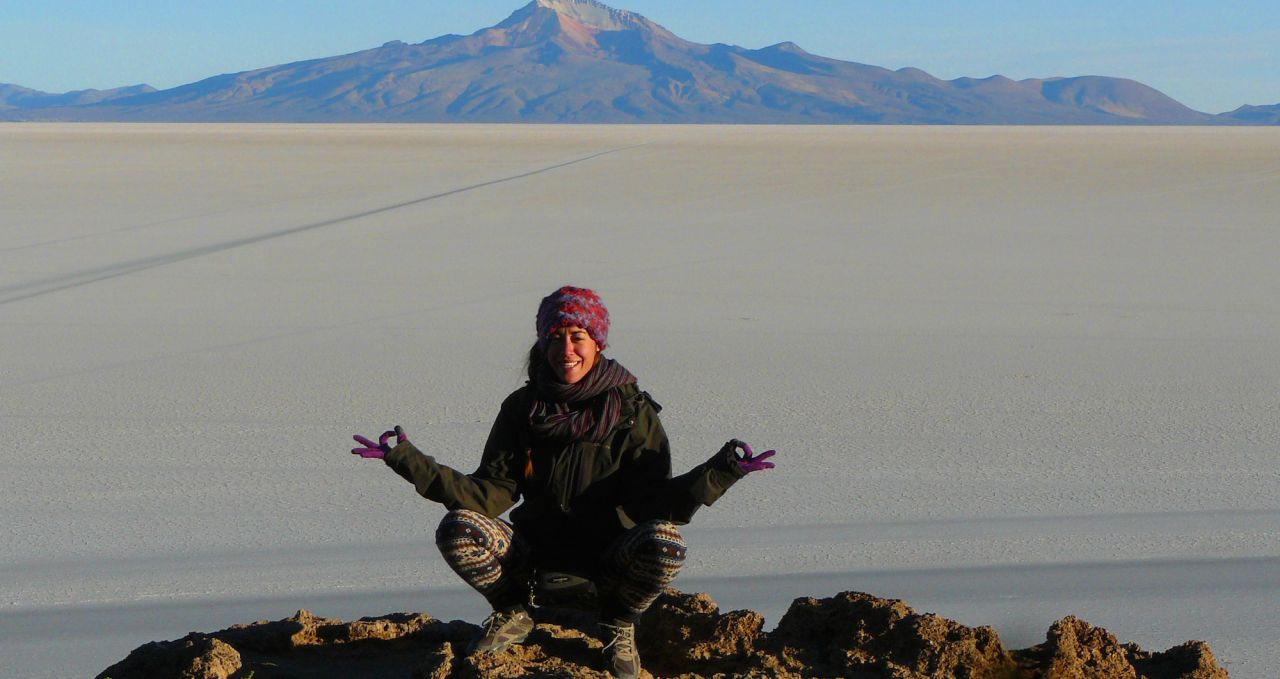
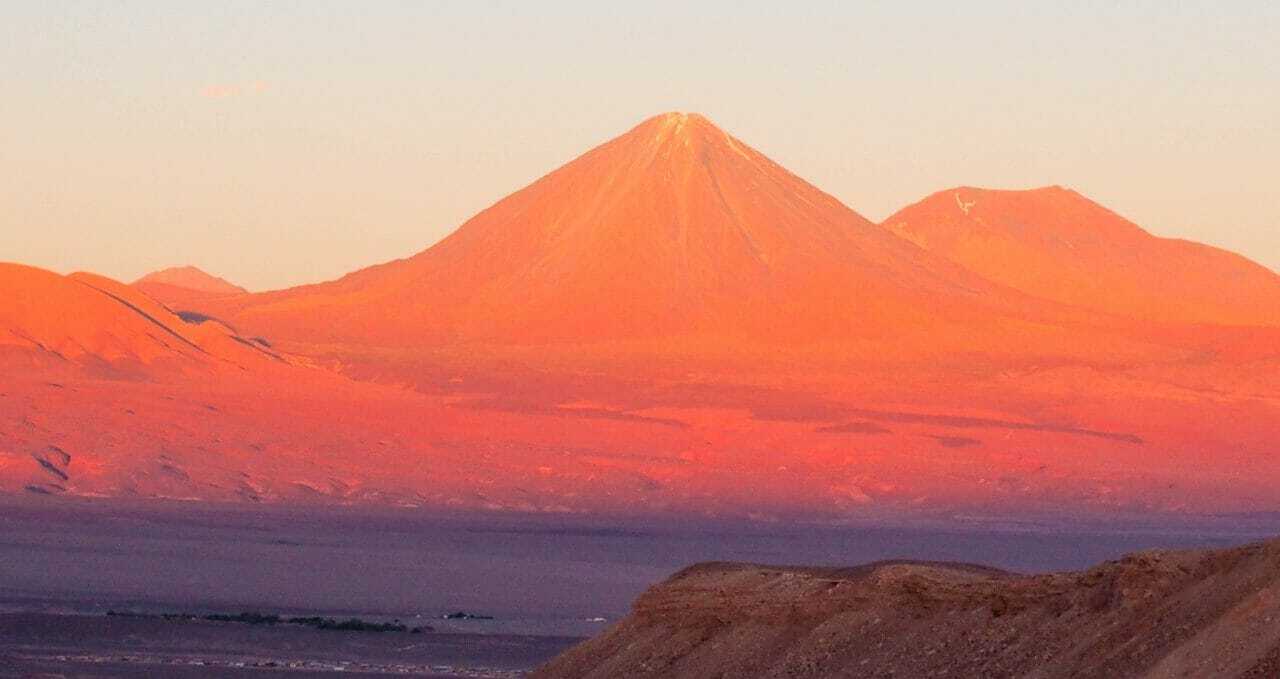
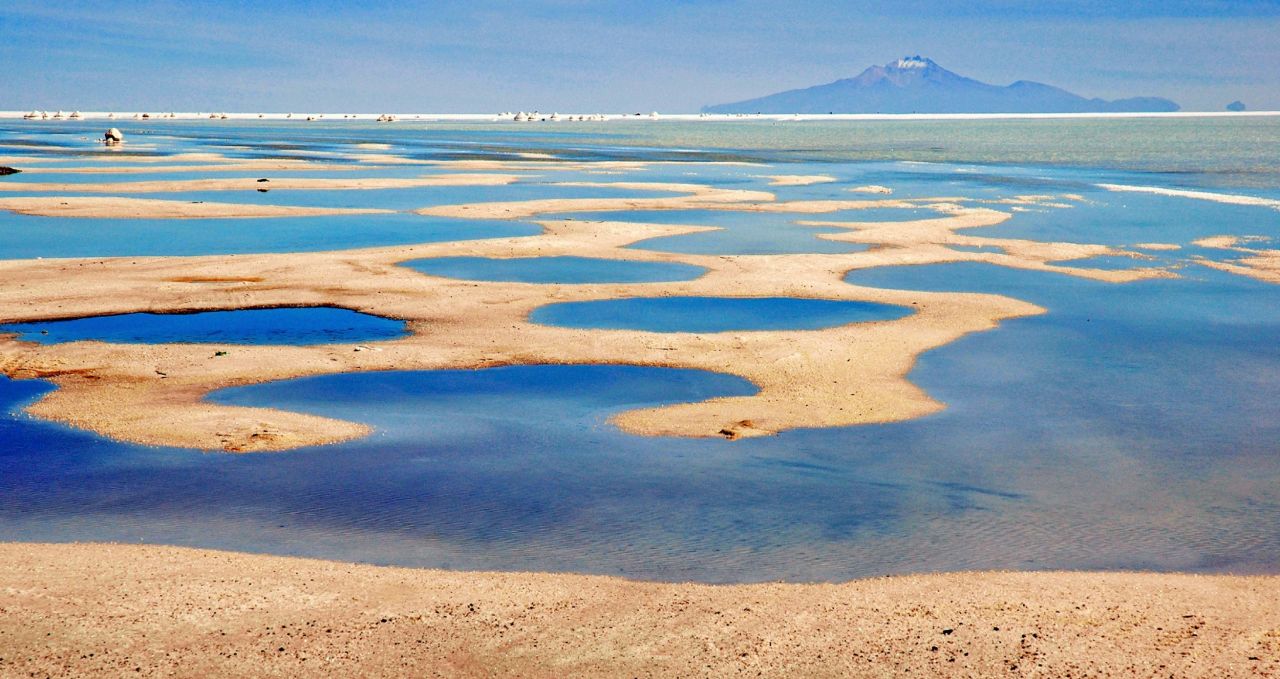
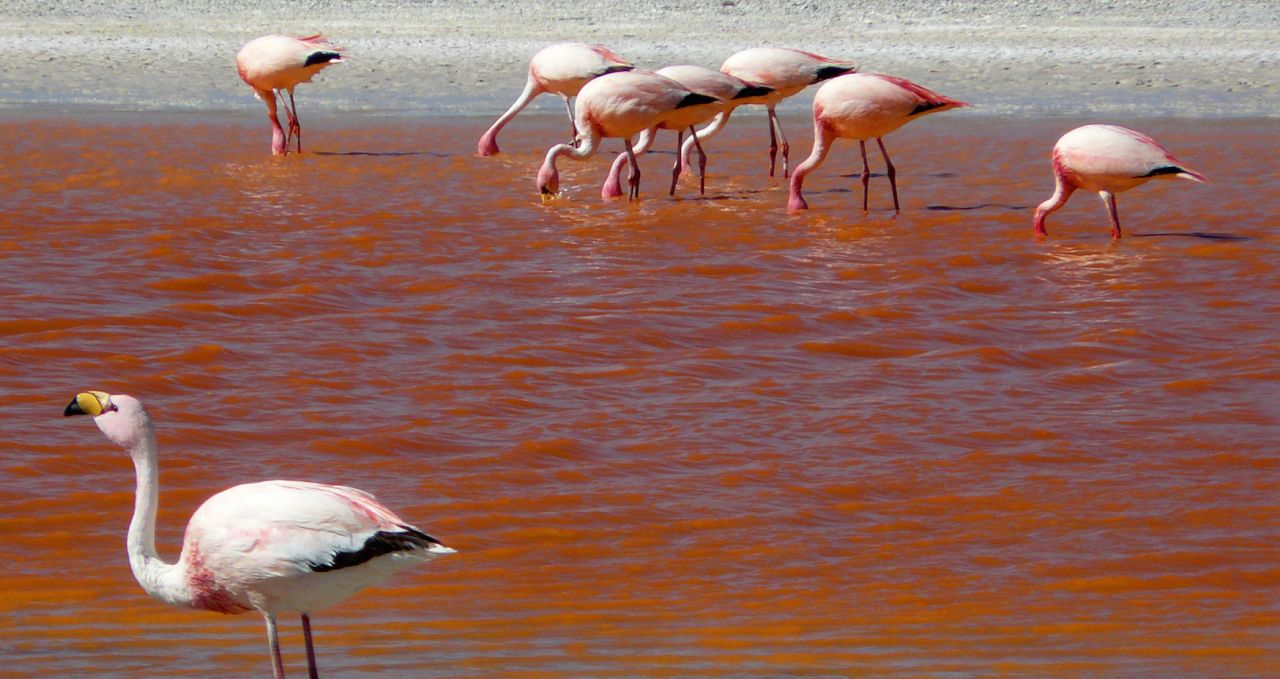
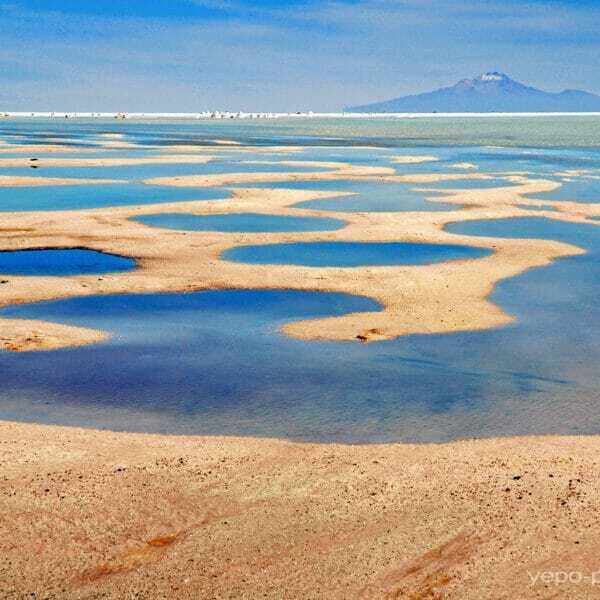
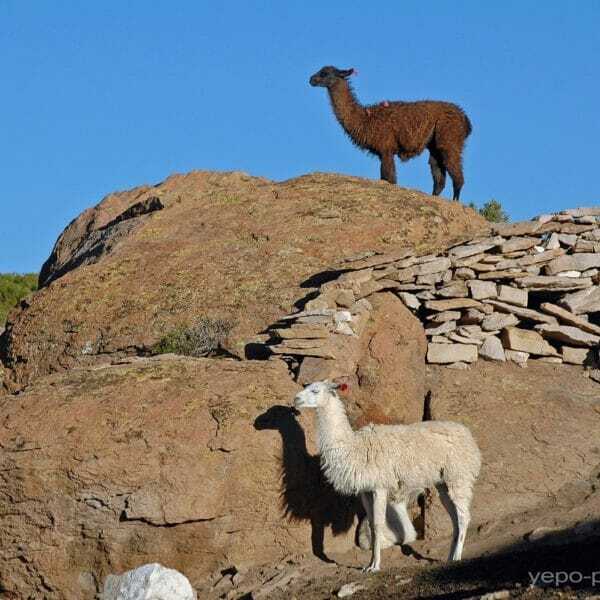
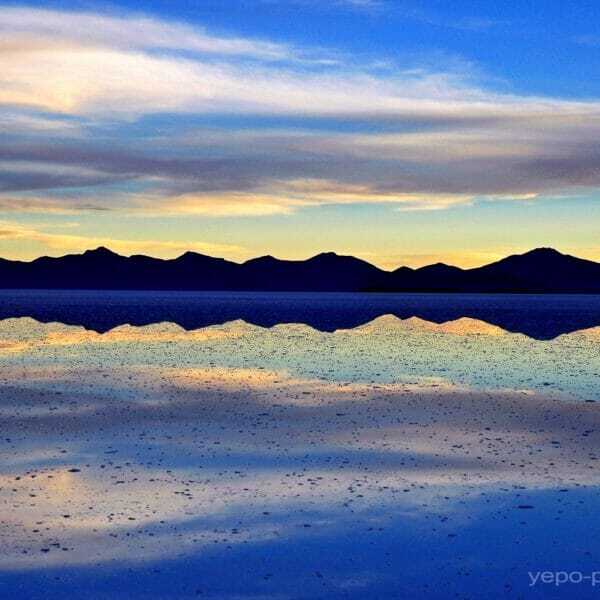

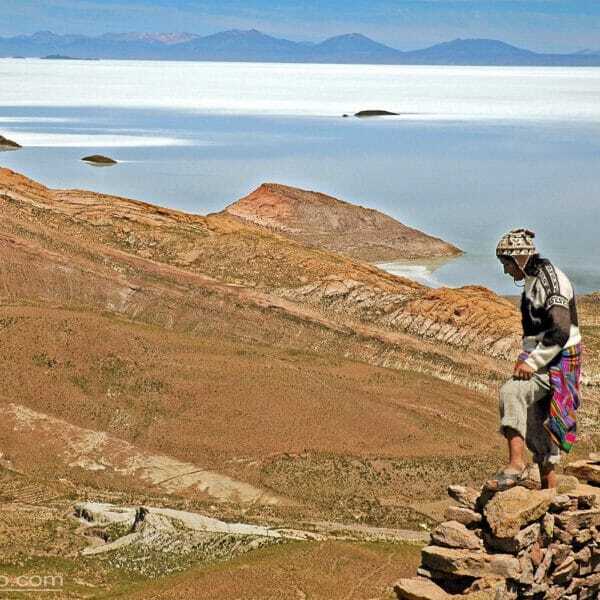
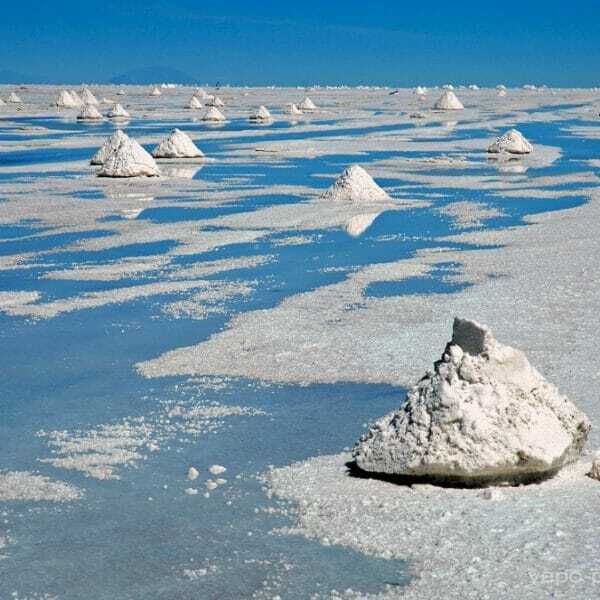
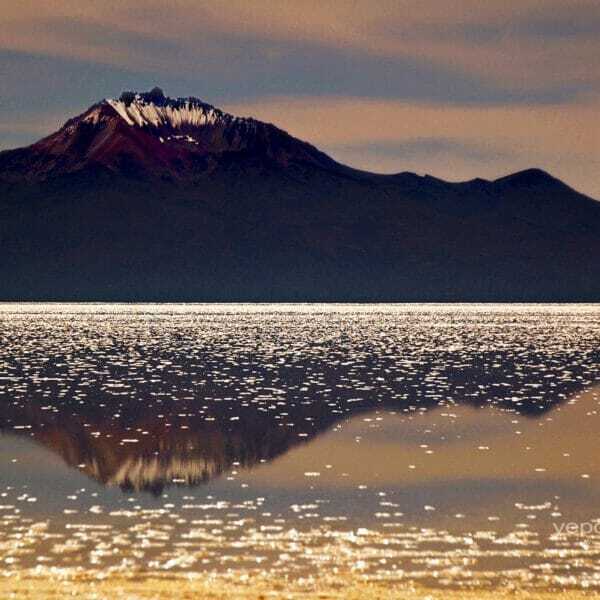
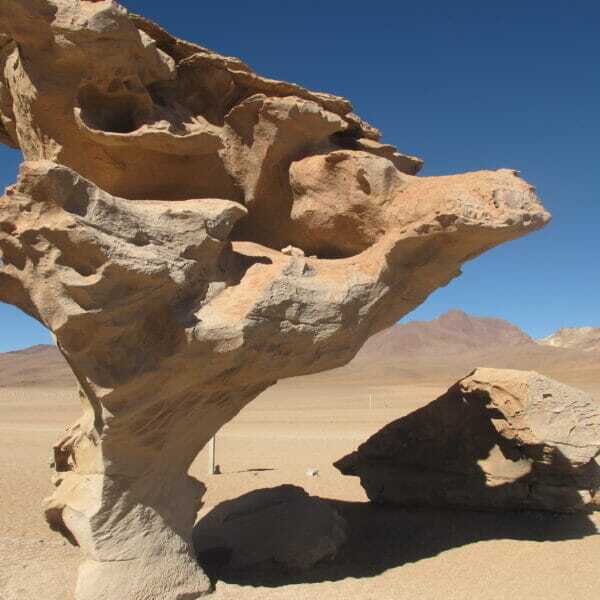
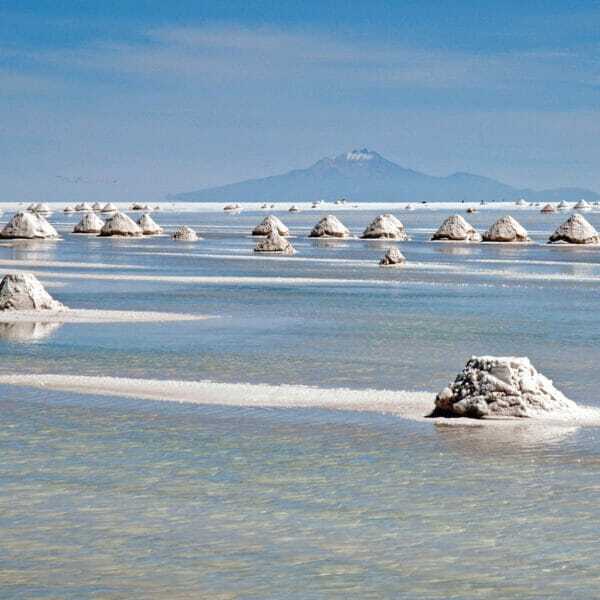
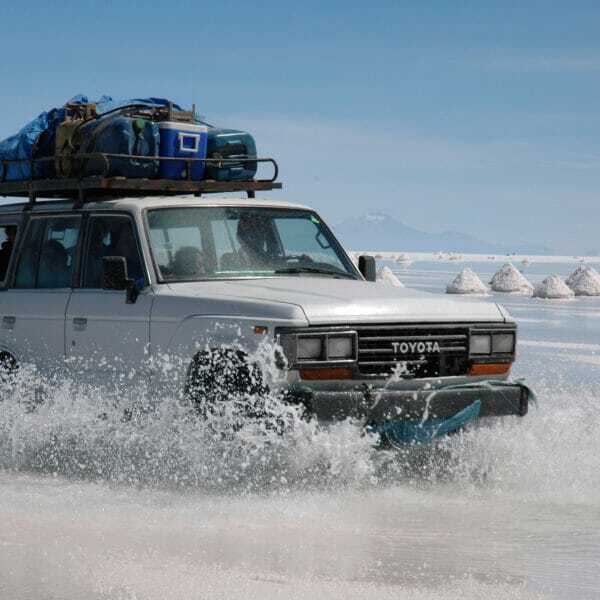
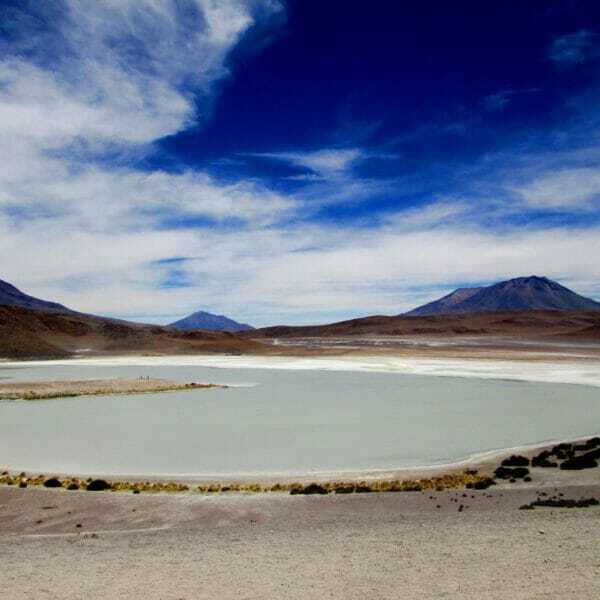
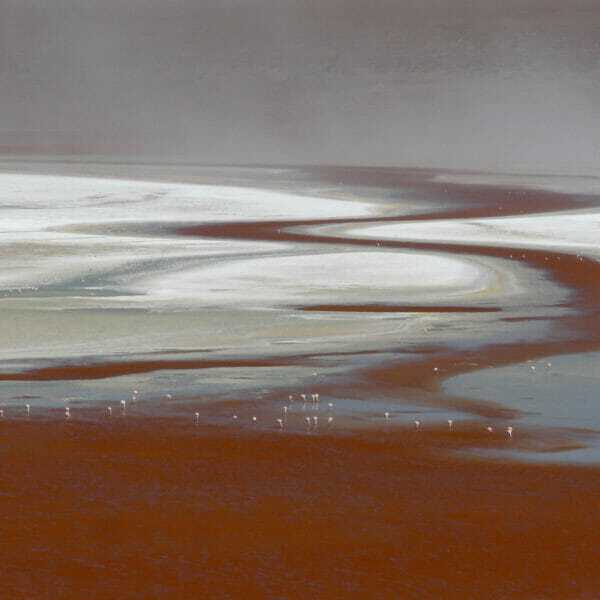
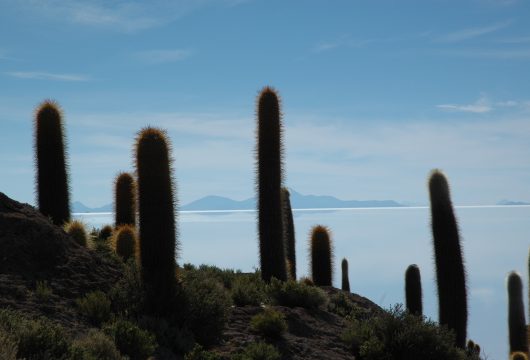
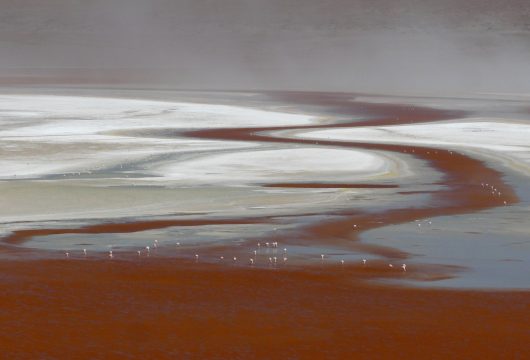
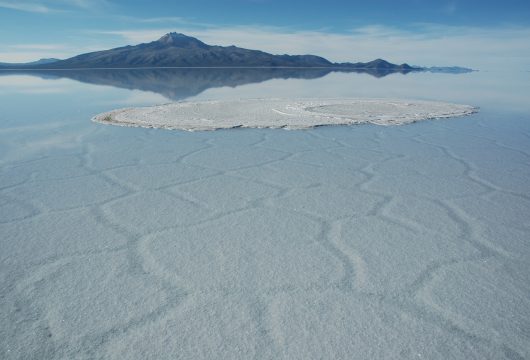
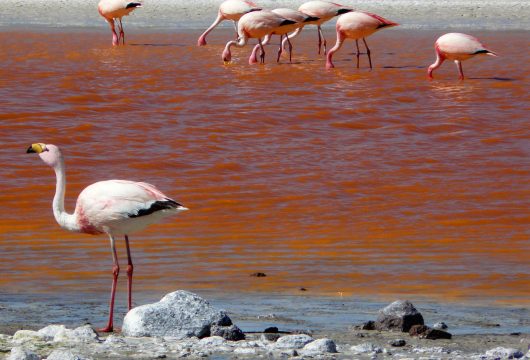
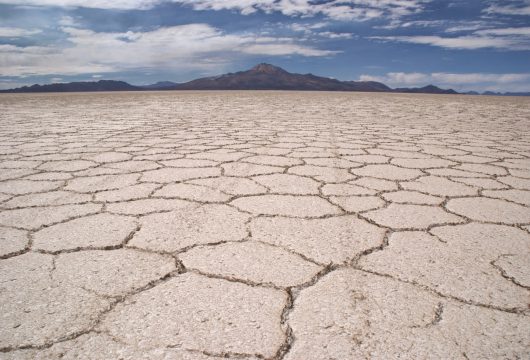
 a Tailor Made Tour
a Tailor Made Tour 